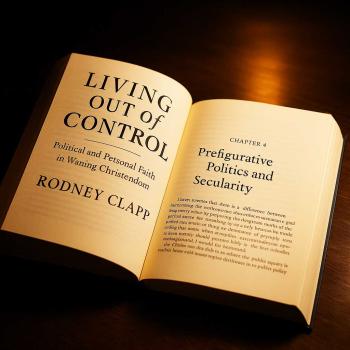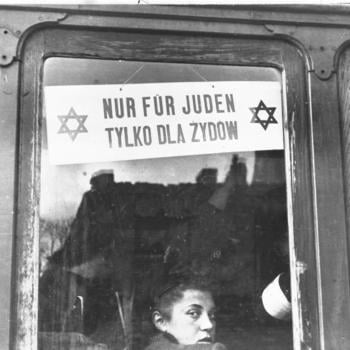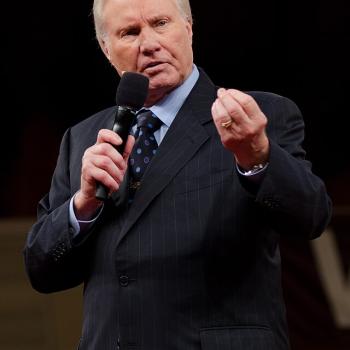Selective Memory in History Books
“History is but a fable agreed upon.” It’s an old saying often attributed to Napoleon. Postmodern philosophy is teaching us that there is no such thing as an objective account of history; history is always written and taught from some point of view. There is no “view from nowhere.” So, when I read a book purporting to survey history—whether universal history or some specific segment—I always look for the author’s (or authors’) biases. Who is being included? Who is not included? Is there an ideological agenda? Is there an attempt to social engineer in the book’s presentation of history? I don’t assume that any of this is conscious, but whether it’s conscious or not there is usually some purpose to the selection of people, events, and movements. All that is to say that all historiography (research, writing about history) is interpretive. You never get all the facts and just the facts. You always get someone’s view of the facts. So, I tend to agree with Napoleon or whoever said “History is but a fable agreed upon.”
Still and nevertheless, I agree with those who argue that there’s value in pushing back against blatant bias, even if unconscious, in historical presentations—whether they be textbooks or trade books, documentaries, magazines or journals, lectures in classrooms or whatever. During the past twenty-five to fifty years the education profession has witnessed a strong move toward multiculturalism, a push to recover and teach the influences of minorities and women in, for example, American history. Sometimes I think that push has gone too far with pernicious results. In other words, such multicultural presentations of American history often push out study of “DWMs” (dead white males) in favor of concentration on African-Americans, Hispanics, Asians, women. Push back against bias or imbalance in any presentation of history that claims to be relatively fair and complete is, in my opinion, always justified.
When you walk into a major “chain” bookstore and browse the “History” section I think you should find a good cross section of history represented there. When you pick up a book published by a major publishing house and see that it alleges to deliver a comprehensive account of history—whether universal or particular—I think you can rightly expect it to include as many kinds of people, movements and events as possible. When you examine a public school textbook about history (including here cultural geography) you should find there all kinds of influential people, movements and events.
The other day I was in a national chain bookstore with my granddaughter—in the Children’s Department. While she looked at books she’s interested in, I wandered around the department gazing at all the sections. My eyes happened to light upon a large section of books devoted to a single series by a single publisher. The publisher is one of the largest in the world, headquartered in New York City. The series was about great people of history—back as far as Julius Caesar and up to and including pop culture figures such as The Beatles. These were little “chapter” books for young readers (as opposed to “picture” books) for kids not yet ready to read books that are mostly text with only a few illustrations. There were at least fifty, possibly as many as a hundred, different “volumes” in the series. Among the people to whom entire volumes were dedicated were: Helen Keller, Johnny Appleseed, Abraham Lincoln, Joan of Arc, Rosa Parks, Martin Luther King, Jr., etc.—a good cross section of races, both sexes, many nationalities, and types of professions or interests. Some of the people were musicians, some politicians, some writers, some scientists, etc. I could tell that the editor(s) of the series tried very hard to be inclusive.
As a historical theologian, of course, I looked, but in vain, for any volume in the series dedicated to a primarily religious historical figure—a church leader such as a pope or a theologian or reformer. Who could seriously argue that Martin Luther does not deserve a volume in such a series? What about Pope John XXIII who called and led Vatican 2? Or John Paul II—a major change agent both in terms of influencing the fall of the Soviet empire in Eastern Europe and changing the face of the Catholic Church worldwide? What about Muhammed? What about Theodor Herzl, founder of modern Zionism? What about Billy Graham? I could go on and on. No volume in this series (or anywhere in the history section of the children’s department) was devoted to a religious figure. Someone might want to argue that John of Arc or Martin Luther King, Jr. were religious figures, but the volumes devoted to them barely touched on their religious beliefs, commitments or practices.
So I picked up the volume on Johnny Appleseed (John Chapman)—a missionary of the Swedenborgian Church (called “The New Church” in America then) to frontier settlements in nineteenth century America. I found only one passing reference to his “preaching to settlers” with no elaboration on the subject. At the very end of the book I found a timeline that included his becoming a minister of the Swedenborgian Church. In fact, however, little known to most people, Johnny Appleseed’s primary motivation for planting apple orchards across America was to get into frontier settlements and spread the “gospel” of Swedenborgianism. He founded numerous Swedenborgian church and study groups throughout the parts of America where he traveled. This aspect of his life deserves more than a passing reference—even in a children’s book, especially one devoted solely to him.
I looked at several of the other volumes and found similar ignoring of religion—even when religion was a major part of the person’s life and work.
This experience took me back to when my daughter was in middle school. I happened to see her “world geography” textbook at home, so I spent some time perusing it. It wasn’t about land masses or oceans; it was a cultures textbook—surveying all the cultures of the world and their histories, beliefs, practices, forms of life. Religion played a major role in the discussions of most cultures—except Europe and North America. In the chapters devoted to Europe and North American I found almost no mention of religion. A passing reference to the crusades (of course) and the Puritans (of course) but these left students with the impression that religion played primarily a negative role in their cultures. What was said about the Puritans could have been taken right out of a Nathaniel Hawthorne novel. The section on Martin Luther King, Jr. said nothing about his being a Baptist minister or having Christian ideals and motivations.
Those parts of the textbook were so blatantly biased in a secular way that I wrote up a complaint about the textbook and gave it to the principle. I never heard back from her. I’m sure my letter went into the “dustbin of history” (to use another cliché about history) and I was probably regarded as a religious fundamentalist or something—for challenging a textbook (at a time when only fundamentalists, supposedly, did such uncouth things).
Even children of atheist families deserve to be taught as complete a view of history as possible—including the roles religion has played in Western culture. Instead, I fear, religion is being ghettoized in public spaces where history is taught and written about. The result is a very incomplete, biased view of history and culture. And, yes, I think atheism ought to be included in such books. A volume on Madalyn Murray O’Hair would be appropriate in that children’s series in the bookstore I visited. She certainly had a profound influence on history and culture. But I would only want her included in the series if it also included Pope John Paul II and/or Billy Graham.












